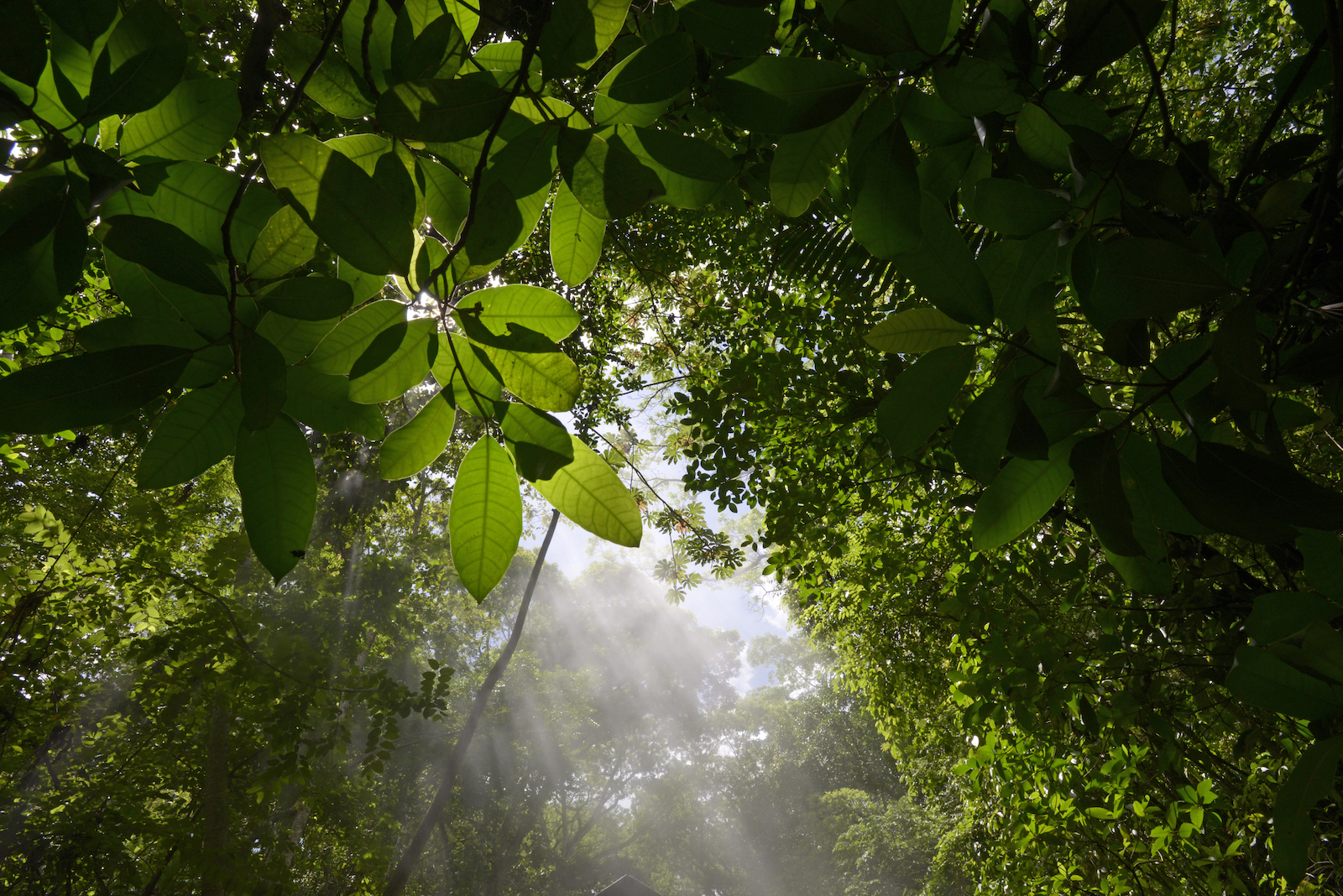This story is part of Record High, a Grist series examining extreme heat and its impact on how — and where — we live.
Around the world, leaves play a critical central role in staving off the worst impacts of climate change. Their ability trap CO2 and combine it with water and sunlight to make food and oxygen is a critical part of what keeps life on Earth going. But according to a new study published in Nature, some tropical forests — including the Amazon rainforest — could become too hot for leaves to photosynthesize.
The Amazon rainforest was once one of the world’s most powerful carbon sinks, largely a result of its uniquely dense tree cover. But deforestation has slowly eaten away at its edges, and drought and fire have limited rainforests’ ability to withstand extreme temperatures. The Amazon was even a net carbon emitter for the first time in 2021. Still, the Amazon covers a land area roughly twice the size of India, and is among the most biodiverse ecosystems on Earth, with over 3 million species of flora and fauna.
All that could be lost if temperatures continue to increase, potentially turning once-lush tropical forests into a savannah-like plain. According to the study, photosynthesis in tropical trees begins to fail at about 46.7 degrees C (116 degrees F). In addition to monitoring the canopy using both research towers and high resolution images from the International Space Station, the research team heated leaves up in order to test the effects of higher temperatures, identifying the critical threshold at which the enzymes necessary for photosynthesis break down. The data was collected every few days from forests all over the world.
“Until now, we really didn’t know what that number was,” said Gregory Goldsmith, a professor of biology at Chapman University who worked on the study.
Though it doesn’t happen instantaneously, lengthy hot spells increase stress on the leaves, eventually killing them. If enough leaves die, the tree dies with them. And if enough trees die, so does the forest.
But so far, that tipping point remains mostly theoretical. The authors found that canopy temperatures between 2018 and 2020 peaked at around 34 degrees C (93.2 degrees F) on average. In a typical year, only around 0.01 percent of the leaves in the upper canopies surpass the temperature at which photosynthesis starts to fail. The global temperature increase that is associated with these changes is around 4 degree Celsius, which is currently in line with worst-case scenario projections.
“As a group, we do not feel that this is our fate,” said Goldsmith. Though he and other researchers emphasized the importance of reducing emissions and caring for the planet’s tropical forest ecosystems.
Tipping points are complex, though, and there may be more factors to consider than heat alone It’s still unclear how drought and wildfire could take its toll on tropical forests, though some appear to be more vulnerable than others, The Amazon shows the clearest signs of heat stress among forests spanning South America, central Africa, the Gulf of Mexico, and Southeast Asia. Fragmentation, or the breaking of large swaths of forest into smaller patches through logging and development, also appears to be a major stressor, mostly because, Goldsmith says, forest edges are hotter and drier than the interior.
Researchers say political stability in rainforest countries plays a major role in ensuring forest protection, which could go a long way towards increasing forest resilience to catastrophic outcomes. In July of this year, deforestation in the Amazon fell by 66 percent, hitting a six-year low. Brazil’s new president, Luiz Inácio Lula da Silva, has led initiatives to discourage deforestation and illegal ranching. His administration has set a goal to stop deforestation entirely by 2030.
Joshua Fisher, another researcher who worked on the Nature paper, said the international collaboration that went into the study made him hopeful for similar results on the political level.
“In some ways, you know, it doesn’t seem that daunting, because we’re all on spaceship Earth together,” he said.



